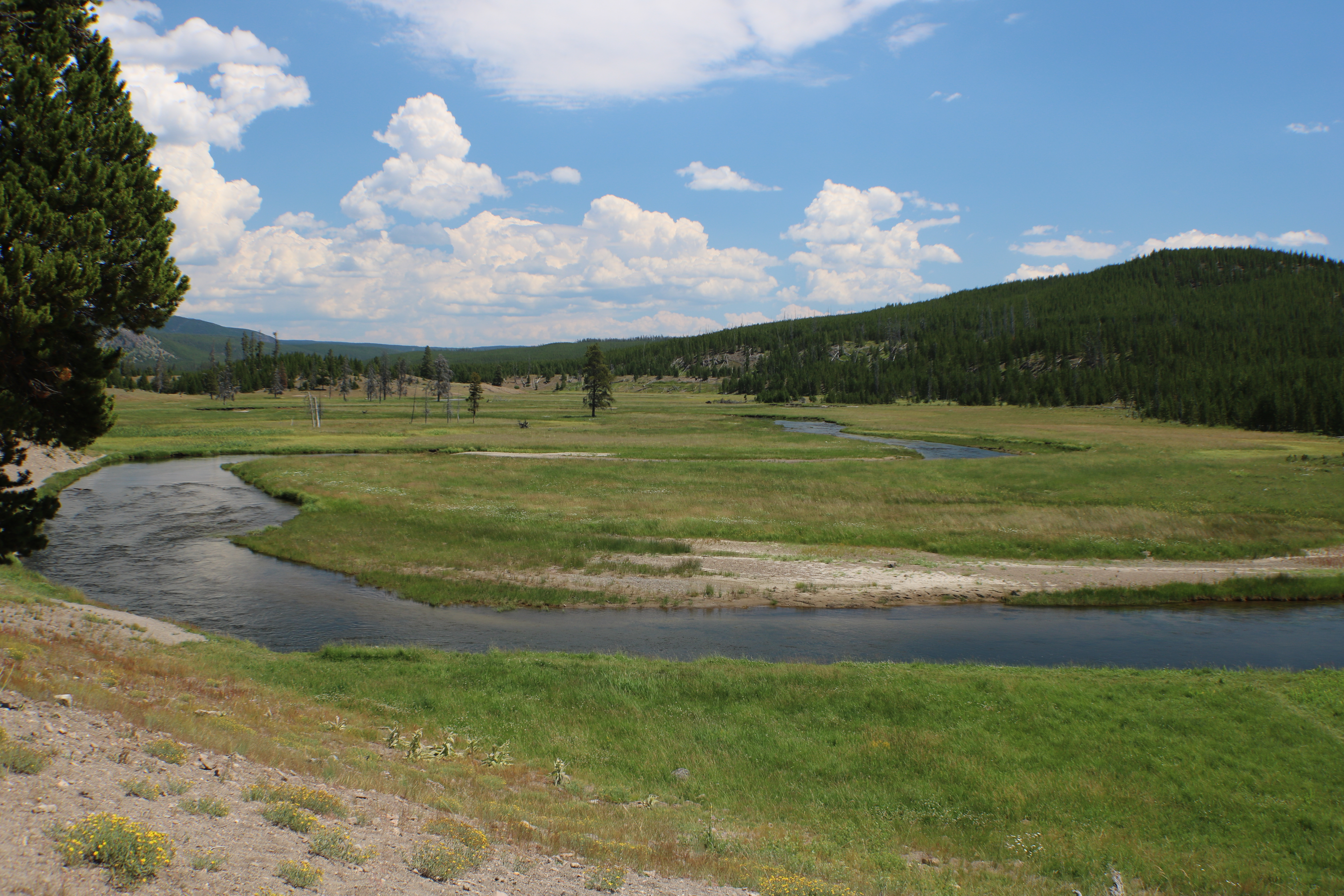Gibbon River Fly Fishing Guides

Meandering meadows, cascading falls, timbered seclusion, larger than average fall run-up rainbows and browns is the Gibbon River in Yellowstone National Park. The Gibbon is easily accessible and walk-n-wade friendly for all ages. Spending a full day wading in the summer months is a great option for smaller wild rainbows and browns looking to eat a terrestrial. Bucket (hole) hoping in the fall is the best time to fish for larger run-up rainbows and browns averaging 16″-20″.
The Gibbon River begins from Grebe Lake and flows a short distance into Wolf Lake. From there it makes its journey through Virginia Cascades into Norris Meadows, Elk Park, Gibbons Meadows to the Gibbon Falls. Depending on what section you fish on the upper portion of the Gibbon, the rainbow and brook trout range from 5”-10” with the occasional 14”-16” rainbow or brown. June and early July are the ideal times to fish the upper section with both dries and nymphs. Depending on the water temperatures and time of day, parts of the upper section can offer great dry fly fishing in the summer months to smaller resident trout with hoppers, beetles, and ants. The lower section of the Gibbon, from Gibbon Falls to where the Gibbon meets the Firehole River to create the Madison River, is our most desired section to fish. We typically like fishing this section in the fall from late September through the last day of fishing in YNP, using nymphs, streamers or swinging soft hackles to larger rainbows and browns.
NOTE: Felt sole wading boots are prohibited on all rivers in Yellowstone National Park. Trout On The Fly offers non-felt rental gear if needed.
River Discharge
Weather Forcast
Click here for the latest NOA Weather conditions and forecast

